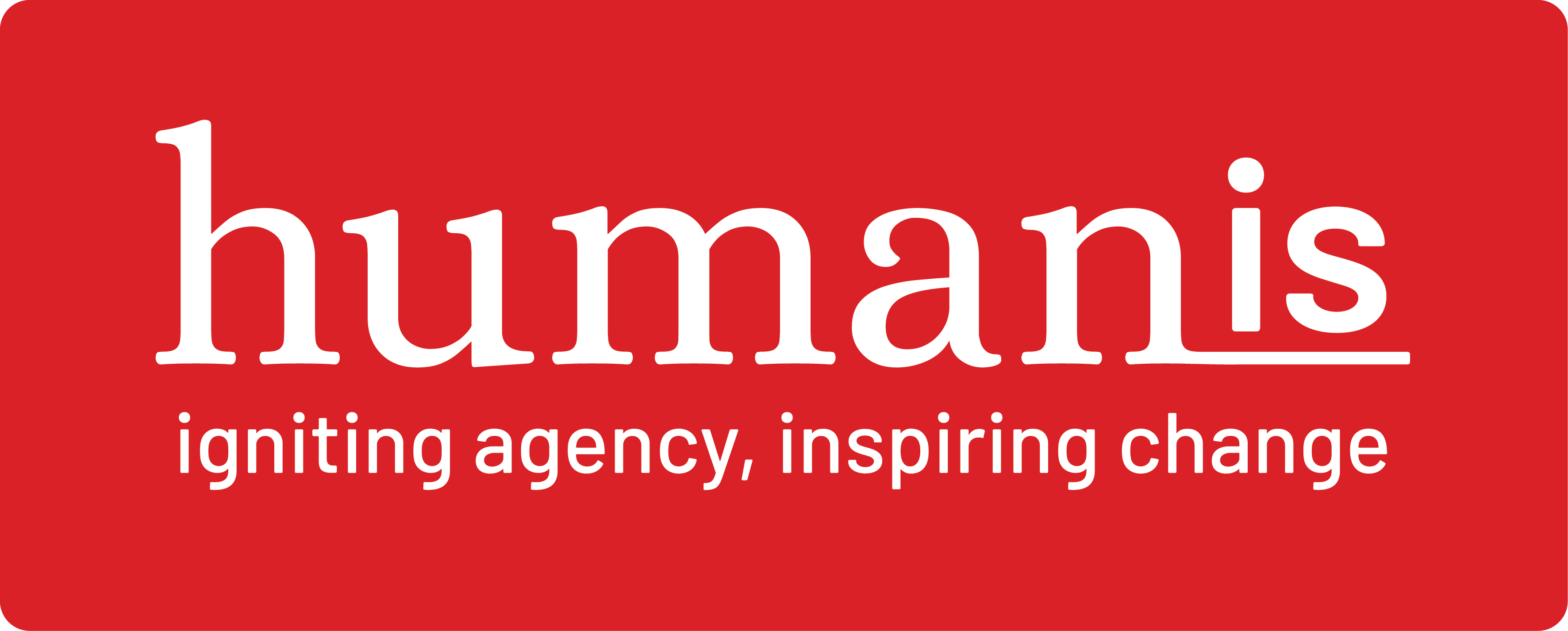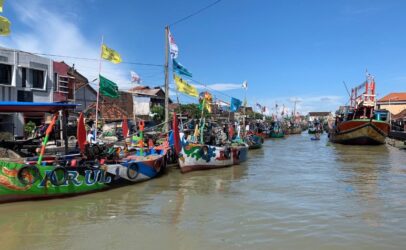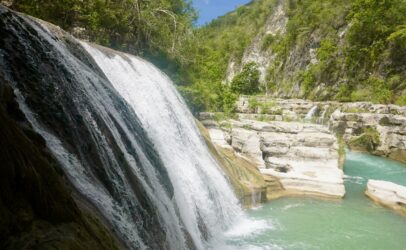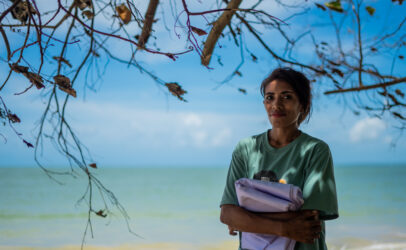Authors: Karunia Haganta, Nisrina Nadhifah, Ruhaina Zulfiani
Editor: Fadilla D Putri
In his 2014 inaugural address as the President of the Republic of Indonesia, Joko Widodo highlighted Indonesia’s historical neglect of its maritime resources, lamenting that the nation had “turned its back on the sea” for too long. This sentiment reflects the trajectory of Indonesia’s development, which has often sidelined the marine sector. The urgency of this issue is underscored by reports such as The World Risk Report of 2014, which identified Indonesia as highly vulnerable to climate crises. The situation was particularly alarming for the regions along the North Coast of Java, where 44% of the coastline had succumbed to erosion and abrasion (Hidayati, et al., 2017). Despite years of neglect, it remains regrettable that Indonesia continues to neglect its maritime heritage and resources.
While the government is not entirely passive in addressing the challenges posed by the climate crisis in coastal areas, its efforts remain largely unsatisfactory. Various ‘development’ projects are often promoted, but as with the sea wall project in Semarang, the projects merely postpone the sinking of coastal areas and do not prevent it from happening (Ley, 2021). This is due to the lack of government’s comprehension of the complex dynamics at play in coastal areas, especially on the condition of coastal areas in Semarang, which experiences land subsidence.
In implementing the FOCUS (Fisherfolk Empowerment for Climate Resilience and Sustainability) project, we acknowledge the diversity of coastal communities in Central Java, characterized by variations in resources, regulations, and social dynamics across the five cities/districts within our operational scope. This rich diversity propelled us to initiate the development of Village Profiles as our primary step. We perceive coastal differentiation through a localized lens, focusing on the village as the fundamental unit of analysis.
Furthermore, we recognize the inherent agency of the coastal communities, rendering the Village Profile not merely a catalog of challenges but rather a repository of aspirations, historical narratives, and latent potentials recognized or awaiting discovery by the communities themselves. Within the Village Profile that is fully participatory, we dig into inquiries using a political-economy approach: Who owns what (or who has access to what)? Who does what? Who gets what? What do they do with it? How do social classes and groups in society (and within the state) interact with each other? How do they change in politics get shaped by dynamic ecologies and vice versa? (Humanis, 2023).
Nevertheless, beyond the scientific and theoretical frameworks in crafting the Village Profile, there is the indispensable aspect of familiarization. Through this immersive process, we engaged directly with fisherfolk, especially women fisherfolk, community leaders, village officials, youth representatives, and other stakeholders, with their full experiences and narratives, and here are a few snippets of their stories.
Balong: Coastal Community is Not all about Fisherfolk
On the evening of February 24, 2024, just after Isha prayers around 7:30 pm, we gathered at the community leader’s home, awaiting the arrival of Balong village residents. Navigating through the dimly lit roads flanked by teak forests and corn fields, we reached our destination at the appointed time. The choice of nightfall for our meeting was deliberate; it’s a time when the community rests, reserving their energy for the early morning hours dedicated to tapping rubber, starting as early as 2:00 am.
Contrary to the stereotypical image of a coastal village teeming with fisherfolk and bustling with maritime activity, Balong presents a starkly different landscape. Here, verdant teak plantations, expansive corn fields, and looming power plants dominate the surroundings. Surprisingly, only a few residents are engaged in fishing; their livelihoods revolve more around agriculture, with discussions often centering on rice, corn, cassava, and beans rather than varieties of fish. Even when the topic of livelihoods arises, only one type of fish, catfish, is commonly mentioned, and even then, it’s seldom cultivated due to residents’ limited knowledge—a situation they express a genuine desire to rectify through learning opportunities.
Yet, their expertise in rice cultivation isn’t merely intuitive; it’s rooted in knowledge. A comparison between their planting schedule and the seasonal calendar documented by the BMKG (Meteorological, Climatological, and Geophysical Agency) reveals a remarkable accuracy in their agricultural practices. While rice and corn are esteemed commodities, their fortunes are intricately tied to market fluctuations, rendering cultivation a gamble. In contrast, staples like beans and cassava offer a semblance of stability in the volatile market arena. However, the aquaculture cultivation, despite its potential, presents its own set of challenges. For instance, he unpredictable growth rates of catfish often fail to align with market demands, posing a formidable obstacle to profitability.
This is not to imply they are the exemption of climate crisis effects. Their agricultural pursuits are profoundly impacted by the changing climate, particularly concerning water management, which is crucial for their crops. While irrigation systems play a significant role, the erratic nature of rainfall poses a substantial challenge. Instances of water scarcity, exacerbated by unpredictable precipitation patterns, frequently lead to crop failures, as evidenced by the struggles faced with cassava and bean cultivation. Venturing into new agricultural endeavors, like cultivating watermelon, demands substantial capital investment, given the uncertainties inherent in such ventures. Consequently, only a select few possess both the courage and resources to embark on these ventures.
For the Balong people, whose livelihoods revolve around agriculture, the sea remains a distant realm, largely absent from their daily thoughts and activities. However, they occasionally make use of resources like coconuts or ketapangfound near the coastline. Despite their primarily agrarian lifestyle, the sight of large ships traversing the ocean instills a sense of unease, as they fear the potential repercussions of extractive industries such as mining. They harbor genuine concerns that mining could exacerbate environmental degradation, particularly coastal abrasion.
Throughout their history, the Balong community has adamantly opposed large-scale external developments, exemplified by their resistance against entities like PTPN (Nuclear power plant) and PLTU (Coal-fired power plant). They exhibit a remarkable capacity for organization and solidarity, frequently rallying together to defend their rights. Notably, they stood in solidarity with Daniel Frits Maurits, an environmental activist detained and charged with defamation under the ITE Law. Maurits had spoken out against detrimental shrimp farming practices responsible for polluting the sea surface with waste and damaging coral reefs in Jepara.
Residents of Balong understand all too well that securing access to resources is an ongoing struggle. The cornfields that now thrive near the “welcome gate” of Balong serve as a tangible testament to this endeavour, as recounted by a community leader. These fields stand as the fruit of collective efforts to assert their rights to the land. Similarly, the predominant occupation among Balong residents—rubber tapping—reflects their tenacity in safeguarding and asserting their land rights. Through perseverance and determination, they successfully defended their access to land, transforming it into rubber plantations that sustain their livelihoods. Both men and women work in rubber tapping, at first, their wages were calculated based on the amount of rubber obtained, but now their wages have begun to be standardized, both for men and women.
Morodemak and Purworejo: Day-to-Day Organizing
Despite the early hour, the scorching heat of the morning sun greeted our journey as we navigated the rugged path leading to Purworejo Village. Alongside the road, a meandering river or perhaps a tranquil pond, adorned the landscape, serving as vital resources owned by the residents. Mangrove trees dotted the surroundings, offering a glimpse of the area’s rich ecological diversity. Evidence of ongoing infrastructure development manifested in the form of bamboo remnants protruding from the roadside, indicative of past road widening efforts that encroached upon the river or pond’s edge. However, our destination on that day, February 26, 2024, was Purworejo’s closest neighbor: Morodemak Village. To reach our destination, we embarked on a quaint wooden vessel known as a ‘get , crossing the river for a modest fee of Rp10,000 for four persons. As we traversed the river’s expanse, fishing boats adorned with weathered political party flags punctuated the waterscape.
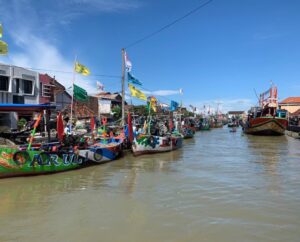
Photo 1. A River that Connects Purworejo Village with Morodemak Village, 27 February 2024 (Nisrina Nadhifah)
Upon reaching Morodemak, a brief stroll from the river crossing led us to the Puspita Bahari Secretariat. Positioned on the riverbank, the building stands adorned with numerous accolades, attesting to the commendable endeavors of Puspita Bahari in championing the cause of fisherwomen. Unlike conventional local women’s communities that often relegated to stereotypical roles such as culinary training and homemaking, Puspita Bahari stands apart, advocating for recognition and empowerment. For these resilient fisherwomen, recognition isn’t merely a matter of prestige; it’s a vital necessity amidst the increasingly turbulent seas wrought by the climate crisis. Acknowledgment as legitimate fisherwomen would afford them access to crucial protections, including insurance coverage. However, their struggle for recognition is hindered by archaic definitions embedded within the Law on Fishers, which fails to encompass the multifaceted roles women play in the fishing industry, relegating them to mere companions of their male counterparts at sea. (Mongabay, 2021).
The climate crisis has left the residents of Morodemak feeling increasingly unsettled. While tidal flooding has become a common occurrence, its severity has fortunately diminished in recent years, typically reaching around a foot in height. Nevertheless, its timing remains unpredictable, often striking when residents are already asleep. This poses a significant challenge for women, who bear theadditional burden of cleaning up after these tidal floods. In addition to the threat of flooding, the erratic weather patterns frequently result in power outages, further exacerbating the situation. Once again, women find themselves bearing the brunt of these challenges, as their traditional domestic duties become significantly more arduous without electricity, particularly tasks like manual washing. These compounding impacts of the climate crisis disproportionately affect marginalized groups within Morodemak, such as children, individuals with physical or mental disabilities, and the elderly, they tend to be forced to stay silent when tidal floods or power outages occur.
One of the enduring impacts of the climate crisis on the development of Morodemak has been the deterioration and loss of mangroves due to rampant deforestation. In the past, when the mangrove population along the coastline was relatively abundant, residents took the initiative to establish ecotourism ventures in Morodemak. However, this commendable effort ultimately floundered due to a combination of inadequate governmental support and the exacerbation of the climate crisis, which further degraded the mangrove ecosystems. Presently, residents find themselves at a loss regarding how to effectively rehabilitate the mangrove habitats.
Given these circumstances, residents find themselves in dire need of social security. Various social security programs are often provided in numerous and disintegrated card systems that usually serve different purposes. This leads to the residents’ frustration over what they perceive as an overwhelming and confusing use of each card. Furthermore, the proliferation of cards often fails to correlate with the availability of corresponding services, as these cards are frequently regarded as mere formalities. Consequently, residents continue to encounter significant obstacles in accessing social security benefits. For instance, many women fisherfolk have spent two years striving to obtain a fisherfolks card, yet they remain unable to access insurance or subsidized diesel, known as ‘rekom’.
Puspita Bahari advocates for these rights, particularly focusing on the welfare of fisherwomen. Its membership encompasses the nearby area called Purworejo’ as well. A discussion with Purworejo residents took place at the Village Hall on February 27, 2024. Notably, Morodemak and Purworejo share many similarities, with Purworejo emerging as an extension of Morodemak. Moreover, residents collectively acknowledge Morodemak, Purworejo, and Margolinduk as Tri Desa, reflecting their intertwined history of village formation, division, and renowned seafood culture (Prasetyo, 2010). Puspita Bahari actively engages with women from Purworejo in various activities and initiatives.
As a result of the persistent efforts of these women, a significant milestone was reached by the end of March 2019. Following a rigorous two-year process, 31 women from Dukuh Tambakpolo, Purworejo Village, successfully changed their occupation in the national identity cards (KTP) that formerly assigned them as housewives to recognizing them as fisherfolks, thus obtaining fisherfolks’ insurance cards. This accomplishment serves as both a positive example and a poignant reminder of the numerous women fisherfolk who remain unrecognized, with their rights as fishers yet to be fulfilled.
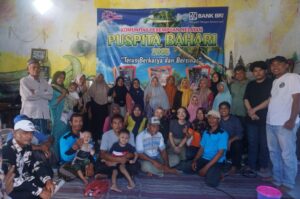
Photo 2. Group photo with Morodemak residents at Puspita Bahari Secretariat, February 26, 2024 (Abdul Manan)
The communities in both villages have their own functions. Besides Puspita Bahari, which fights for the rights of fisherfolk, especially women, there are many recitation activities in Purworejo, whether for women, men, or young people. During the month of Syawal, a series of recitations culminated in the tradition of Sedekah Laut, a collective effort involving residents from Tri Desa. Sedekah Laut aims to avert potential calamities, especially at sea, such as adverse weather conditions or accidents involving fisherfolk
The recitations and rituals indeed aim to “prevent” bad things from happening. Unfortunately, especially in Purworejo, the facilities needed to handle crises, such as ambulances, do not exist. Consequently, in cases of emergencies such as illness or childbirth requiring transportation beyond the village, residents must rely on private vehicles or seek assistance from neighbors willing to lend their vehicles.
Timbulsloko: Standing Against Flooding
Timbulsloko Village has been widely covered in the media as a “Stilt House Village,” built to adapt to increasing tidal floods that have been encroaching on its land area. Residents we spoke with mentioned that since the early 2000s, Timbulsloko has been gradually sinking due to erosion and tidal flooding, leading to sea levels surpassing the land surface. Timbulsloko stands out as the village most affected by erosion compared to the other 19 villages in Sayung Sub-district, Demak District.
Since the 2000s, many productive lands in the village, such as gardens and rice fields, have shrunk or vanished entirely. Residential areas in two sections, Borogame and Timbulsloko, have even been permanently submerged by seawater. The “Stage Houses,” often discussed in the news, are a community-led effort, with assistance from non-governmental organizations, to construct raised pathways throughout the village for daily access. Since these pathways are built on stilts, the houses are also adapted into stilt houses to match the road’s height.

Photo 3. Settlement in Timbulsloko Village, March 4, 2024 (Nisrina Nadhifah)
The recurring tidal floods seems unsolvable, as they have observed the floods worsening in recent years, particularly during heavy rainfall. Consequently, their once reliable sources of income from rice fields and coconut plantations have dwindled, prompting a shift towards shrimp and milkfish pond farming. However, with the gradual loss of land, many have resorted to becoming fisherfolk or taking up manual labor jobs as informal workers in factories or daily wage earners.
Women in Timbulsloko also participate in fishing activities, primarily utilizing the ‘jebak’ method. This involves setting up a net-like device in the afternoon around 3:00 PM and retrieving it the following day around 6:00 AM. According to these fisherwomen, they typically use between four to nine gears, yielding an average catch of approximately 3 ounces per gear.
Residents of Timbulsloko are grappling not only with the threat of flooding but also with the constant fear of hunger due to unstable incomes and the soaring prices of essential goods. Many admit to relying on local shops to borrow money for groceries, striving to avoid the pitfalls of borrowing from ‘bank titil’ or ‘bank setan’ or devil’s banks — unlikesome neighboring villagers who are frequent clients of predatory lenders. (see previous article here).
In regard to access to clean water, residents still depend on two boreholes for access to clean water. One borehole was funded by community contributions in 2004, while the other is powered by solar energy, donated by Greenpeace in 2023. Since June 18, 2023, the solar-powered pump has been providing water from a well dug by residents since May 31, 2023. Additionally, solar-powered streetlights now illuminate Timbulsloko. Both boreholes and the solar water pump are managed collectively by the community, with agreed-upon maintenance dues and management structures established through deliberation among residents.
Tanjungmas: From Administrative Differences to the Role of ‘Sangpuan’ in Accommodating Women’s Aspirations
Tanjungmas Village, situated in Semarang City, presents a unique contrast to the villages we’ve explored previously. Unlike those distant locales requiring arduous journeys and rugged terrain, Tanjungmas Village enjoys the convenience of being close to the city center.
Despite being administratively part of Semarang City, Tanjungmas Village is home to a varied population. The FOCUS project has been operating in three villages within Tanjungmas: Tambakrejo, Tambaklorok, and Kebonharjo. Among these, Kebonharjo Village is notably more urbanized, with residents predominantly employed in factories or pursuing entrepreneurship. In contrast, the residents of the other two villages mainly rely on fishing for their livelihoods.
We faced challenges gathering historical data about Kelurahan Tanjungmas due to the absence of knowledgeable individuals about the village’s past. Unlike in other areas, there is no village leader who knows Tanjungmas’ history well, as the village head is a city government official appointed directly by the mayor upon recommendation by the regional secretary, and these appointees are not Tanjungmas’ natives. Additionally, Tanjungmas, situated in the city center, experiences significant population transmigration, leading to difficulties in finding key informants familiar with the history and details of Tanjungmas.
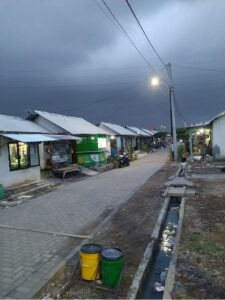
Photo 4. Settlement in Tanjungmas Village, March 8, 2024 (Ruhaina Zulfiani)
In Tanjungmas, diversity is evident, including in healthcare options. One notable facility is the “5,000 Clinic” operated by doctors from the Christian Foundation for Public Health (YAKKUM). YAKKUM, established through the collaboration between the Javanese Christian Church Synod and the Indonesian Christian Church Synod, provides affordable healthcare services. Located in RW 13, the clinic is a popular choice among residents due to its low consultation fee of Rp5,000, which includes medication typically lasting for three days. Despite most residents are Moslem, they still trust the doctors from YAKKUM. However, some residents express concerns about the clinic’s limited operating hours, only open three days a week on Monday, Wednesday, and Friday. On other days, many residents opt to visit Puskesmas for treatment.
The ‘Sangpuan’ forum, abbreviated from Sayang Anak dan Perempuan’ (Caring for Children and Women), has been actively conducted since 2022 on an annual basis. This initiative focuses on discussing proposals concerning women’s and children’s issues to be included in the Village’s Musrenbang (Village Development Planning Meeting), which are then escalated to the sub-district and city levels for decision-making. These proposals typically address health, economic, and social concerns. Sangpuan forums, like many others in the Musrenbang process, serve as affirmative actions to ensure the inclusion of women and children in pivotal decision-making processes. Through Sangpuan, it is anticipated that government-led development efforts will better cater to the diverse needs of the community, thereby promoting inclusivity.
